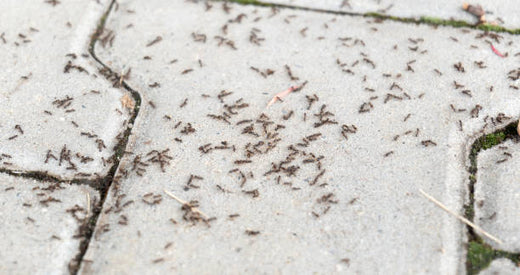HOW TO PREVENT ANT INFESTATIONS IN GARDENS




Gardens attract ants searching for food, water, and shelter, and while a few ants are generally harmless, a larger infestation can disrupt plant health and even attract aphids. Preventing an ant problem involves a combination of natural deterrents, strategic gardening practices, and promoting a balanced ecosystem that keeps ant populations in check. Learn how to protect your garden from ant invasions by growing ant-repelling plants, removing food sources, and using organic solutions like diatomaceous earth to stop ants without affecting the soil or harming beneficial insects. These simple, eco-friendly methods can help you keep your garden healthy and ant-free year-round.
Plant Natural Repellents: Grow ant-repelling plants like mint, lavender, and marigolds around the garden’s edges to discourage ants.
Remove Food Sources: Keep the garden clear of fallen fruit, compost piles, and pet food that attract ants.
Use Diatomaceous Earth: Sprinkle this natural powder around ant trails and plants to deter ants without harming the soil.
Set Up Barriers: Use barriers like cinnamon, cayenne pepper, or coffee grounds around plants to create natural, non-toxic ant deterrents.
Water Strategically: Avoid overwatering, as ants are attracted to moisture-rich environments; water plants directly and sparingly.
Encourage Beneficial Insects: Ladybugs, spiders, and lacewings are natural predators that help keep ant populations in check.
Preventing ant infestations in your garden starts with planting natural repellents like mint, lavender, and marigolds, which release scents that ants tend to avoid. Placing these around the garden’s perimeter helps create a natural boundary. Additionally, make it a habit to remove food sources—fallen fruit, pet food, and compost can attract ants, so clearing these away regularly reduces temptation.
For a direct approach, diatomaceous earth is an effective and natural way to deter ants; sprinkle it around trails and near plants to create a barrier that ants won’t cross. Set up barriers using natural deterrents like cinnamon, cayenne pepper, or coffee grounds, which can be sprinkled around plants to make entry points unappealing to ants.
Another key measure is watering strategically; avoid creating moist environments that ants thrive in by watering plants directly at the base and only as needed. Finally, encourage beneficial insects such as ladybugs and lacewings to help control the ant population naturally, reducing the risk of infestation while keeping your garden healthy and balanced.
Comments 0